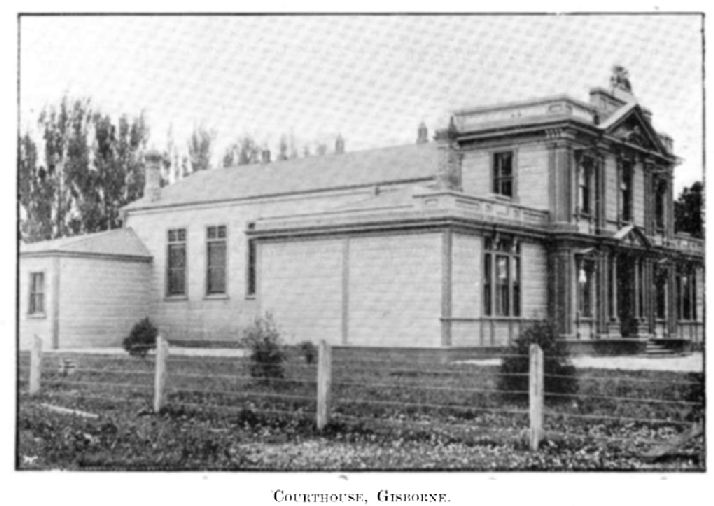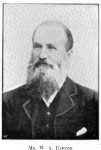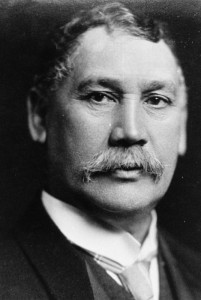The continuing evolution of Maori land law
[caption id="attachment_5954" align="alignright" width="150"] Professor Richard Boast[/caption]
Professor Richard Boast[/caption]
Professor Richard Boast, author of the award winning book, The Native Land Court (Vol.1) 1862-1887: A Historical Study, Cases and Commentary outlines the scope of his second volume, in what will be a trilogy on the evolution of Maori land law. The third volume, currently being researched, will cover the period 1910 down to the enactment of the Maori Affairs Act 1953.
He says:
Maori land law is an area of law that has been in constant change over the years. This process of change and amendment has not come to an end. There is now a new draft bill that has been circulated by the government which will make some important changes to the existing statute, Te Ture Whenua Maori/Maori Land Act 1993. The 1993 Act was itself a major shift in direction compared with its predecessor, the Maori Affairs Act 1953.
The scope of The Native Land Court Volume 2
The period covered by Volume 2 was also a period of major changes to Maori land law, some of which remain in the present law. Until 1894, for example, appeals from the Native Land Court were by way of rehearings: that is, appeals were completely reheard, with additional parties, and fresh evidence being called. Sometimes rehearings were lengthy and more complex than the original case, and created completely new issues and problems. In 1894 a new Court was established, the Native Appellate Court, today the Maori Appellate Court, which hears appeals from the Maori Land Court. A number of decisions of the Appellate Court are included in Vol 2.
The Validation Court
Not all of the changes that occurred in the period covered by Vol 2 (1888-1909) live on to the present day. One of the major controversies of that time related to the legal uncertainties arising from jurisdictional mistakes made by the Native Land Court when investigating titles to land. This was more of an issue for European private purchasers of Maori land, and was the cause of a great deal of debate and controversy in the 1890s. Eventually a separate Court was established in 1893 to deal specifically with this issue, given the name of the Validation Court.
[caption id="attachment_7418" align="aligncenter" width="530"] Image credit: The Cyclopedia Company 1901 - CC BY-SA[/caption]
Image credit: The Cyclopedia Company 1901 - CC BY-SA[/caption]
It was expected that this Court would be a very busy institution with a large caseload, but in fact the Validation Court was only ever really important around Gisborne.
[caption id="attachment_7419" align="alignright" width="101"] W. A. Barton[/caption]
W. A. Barton[/caption]
Here it dealt with a number of large and complex cases. It’s leading judge, Judge Barton, was himself a controversial figure, often at loggerheads with the government of the day.
The reason for the Validation Court’s unusual prominence in Gisborne was due to a number of complexities peculiar to Maori land tenure in that area, including a massive land trusts project established by the East Coast chief Wiremu Pere and his legal adviser W L Rees (later known as the East Coast Trust). In the end the Validation Court became unnecessary largely as a result of an important decision of the Privy Council, also concerned with land blocks near Gisborne, decided in 1905. A number of Validation Court decisions are also included in Vol 2.
The Urewera Commision
Another important development in the period covered by Vol 2 was the establishment of the Urewera Commission in 1896. This body was an outcome of negotiations between representatives of the Tuhoe people and the Liberal government in 1895. It was agreed that instead of the Native Land Court, land titles in the Urewera region would be inquired into by a special body, the Urewera Commission, which had the power to divide the vast Urewera region into a number of smaller sub-blocks, such as the Te Whaiti, Maungapohatu, and Waikaremoana blocks, and issue titles to them. This created yet another complicated history of investigations, reinvestigations, and appeals, which lasted until 1912. Some decisions of the Urewera Commission are also included in vol 2.
The development of Maori Land Councils/Boards
In 1900 two important statutes were enacted, the Maori Councils Act, and the Maori Land Administration Act. The Maori Land Administration Act created new Maori Land Councils, which had power to manage and subdivide land vested in them by Maori; they also had a range of other functions and responsibilities. In 1905 the Maori Land Councils became the Maori Land Boards and were closely aligned with the Native Land Court. Land vested in the Boards led to yet another complexity, that of the so-called “vested lands”, not finally resolved until the 1950s.
King Country cases
In the period covered by vol 2 the Native Land Court was still actively engaged in investigating titles, as it had been doing since 1865. It also heard many important partition cases, some of which were of a scale and a level of complexity that were not very different from full-scale title investigations. The Court was a very busy institution in the King Country in particular. The King Country was first investigated by the Court in a massive case that took place at Otorohanga in 1886, but this was just the start. Through the 1890s there was a sequence of massive King Country partitions, some of them very elaborate and time-consuming cases that took months to be heard, including cases relating to Kawhia (1889), Kakepuku-Pokoru (1889), Wharepuhunga (1892) and Rangitoto (1898). A full selection of these important King Country partitions is also included in vol 2.
Native Lands Act 1909
[caption id="attachment_7424" align="alignright" width="201"] James Carroll c.1914 Image credit: Wikipedia[/caption]
James Carroll c.1914 Image credit: Wikipedia[/caption]
The termination point for vol 2 is the Native Lands Act of 1909. It is this statute which laid the real foundations for modern Maori land law. The 1909 Act was the result of a lengthy and politically bi-partisan reform project in which the judges of the Court were involved. The project was led by James Carroll (the Native Minister in the Liberal government) assisted by A T Ngata, and the new statute was drafted by John Salmond, then counsel assisting the law drafting office, and later Solicitor-General and a judge of the Court of Appeal. The 1909 Act consolidated a great deal of confusing law, but it preserved many continuities from the past, including the Native Land Court itself.
Scope of Volume 3
Many changes were still to come after 1909, and these will be covered in vol 3 of the series. These included the emergence of consolidation and development schemes, the use of trusts and incorporations as devices to manage Maori freehold land, and a proliferation of cases about lakes, rivers, and the foreshore. Vol 3 will cover the period from 1910-1953, also a period of rapid change. That the process of constant change and development has not come to an end is shown by yet further developments that occurred in the 1970s and 1980s, leading to the 1993 Act. Now, once again, there are to be major changes to the law and to some extent a further shift in direction. The history of Maori land law is extraordinarily elaborate and complicated, and may well continue to be so.
More information